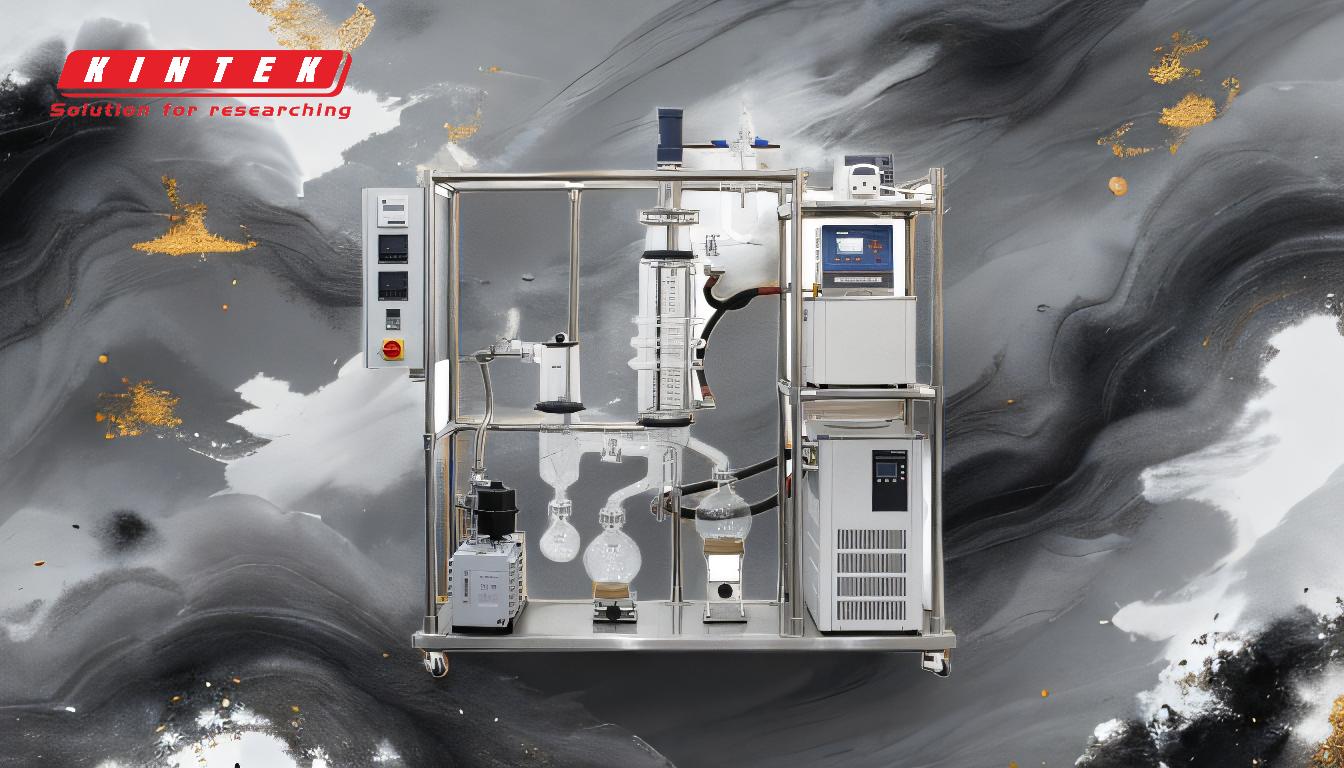Distillation is a fundamental technique used to separate and purify components of a liquid mixture based on their differing volatilities. By heating the mixture to specific temperatures, the more volatile components vaporize first, leaving behind less volatile substances. These vapors are then condensed back into liquid form and collected, resulting in purified substances. Distillation is widely applied in chemical laboratories, industrial processes, and even household settings to produce purified liquids such as distilled water, essential oils, and alcoholic beverages. Its primary purpose is to isolate desired components from a mixture, making it a critical process in both scientific research and industrial production.
Key Points Explained:

-
Separation of Components Based on Volatility:
- Distillation leverages the differences in boiling points of the components in a liquid mixture. When the mixture is heated, the component with the lower boiling point (more volatile) vaporizes first, while the less volatile components remain in the liquid phase.
- For example, in the distillation of water and ethanol, ethanol (boiling point: 78.37°C) vaporizes before water (boiling point: 100°C), allowing for their separation.
-
Purification of Substances:
- The primary goal of distillation is to obtain a purified substance by isolating it from impurities or other components in the mixture. This is achieved through the selective vaporization and condensation process.
- For instance, distilled water is produced by boiling water and condensing the steam, leaving behind contaminants and minerals.
-
Vaporization and Condensation:
- Distillation involves two key physical processes: vaporization (converting a liquid into vapor by heating) and condensation (converting vapor back into liquid by cooling).
- These processes are facilitated by specialized equipment such as a distillation flask, condenser, and collection vessel, which ensure efficient separation and collection of the desired component.
-
Applications Across Various Fields:
- Chemical Laboratories: Distillation is used to purify solvents, separate reaction products, and isolate compounds for analysis.
- Industrial Factories: It is employed in the production of fuels (e.g., petroleum refining), alcoholic beverages (e.g., whiskey, vodka), and essential oils.
- Household Use: Simple distillation setups are used to produce distilled water for drinking or medical purposes.
-
Types of Distillation:
- Simple Distillation: Used for separating components with significantly different boiling points (e.g., water and salt).
- Fractional Distillation: Employed for mixtures with closer boiling points, using a fractionating column to achieve better separation (e.g., crude oil refining).
- Steam Distillation: Used for heat-sensitive compounds, such as essential oils, where steam is introduced to lower the boiling points of the components.
- Vacuum Distillation: Applied to substances with high boiling points or those that decompose at high temperatures, using reduced pressure to lower the boiling points.
-
Thermodynamic Principles:
- Distillation relies on the thermodynamic properties of the components in the mixture, such as vapor pressure and boiling point. By manipulating temperature and pressure, the process can be optimized for specific separation needs.
- For example, in vacuum distillation, reducing the pressure allows for the separation of high-boiling-point substances at lower temperatures, preventing thermal degradation.
-
Reverse Distillation for Gases:
- While distillation is commonly associated with liquids, the reverse process can be used to separate gases. By liquefying gas mixtures through changes in pressure and temperature, components with different boiling points can be isolated.
- This technique is used in air separation units to produce pure oxygen, nitrogen, and argon.
-
Importance in Industrial Processes:
- Distillation plays a critical role in industries such as petrochemicals, pharmaceuticals, and food and beverage. It ensures the production of high-purity products, which are essential for quality control and safety.
- For example, in petroleum refining, fractional distillation separates crude oil into useful fractions like gasoline, diesel, and kerosene.
-
Limitations and Considerations:
- Distillation is not suitable for separating components with very similar boiling points or for mixtures that form azeotropes (constant boiling mixtures).
- Energy consumption is another consideration, as distillation often requires significant heat input, making it less efficient for large-scale processes without optimization.
-
Future Innovations:
- Advances in distillation technology focus on improving energy efficiency, reducing environmental impact, and enhancing separation precision. Membrane distillation and hybrid distillation processes are emerging as innovative solutions for specific applications.
In summary, distillation is a versatile and essential technique for separating and purifying liquid mixtures based on volatility. Its applications span across scientific, industrial, and domestic domains, making it a cornerstone of modern chemistry and engineering. Understanding its principles and methodologies is crucial for optimizing its use in various contexts.
Summary Table:
| Aspect | Details |
|---|---|
| Principle | Separation based on differences in boiling points (volatility) |
| Key Processes | Vaporization and condensation |
| Applications | Chemical labs, industrial production, household use (e.g., distilled water) |
| Types | Simple, fractional, steam, vacuum distillation |
| Importance | Critical for producing high-purity products in various industries |
| Limitations | Not suitable for similar boiling points or azeotropes; high energy use |
| Future Innovations | Membrane distillation, hybrid processes for efficiency and precision |
Discover how distillation can optimize your processes—contact our experts today for tailored solutions!









